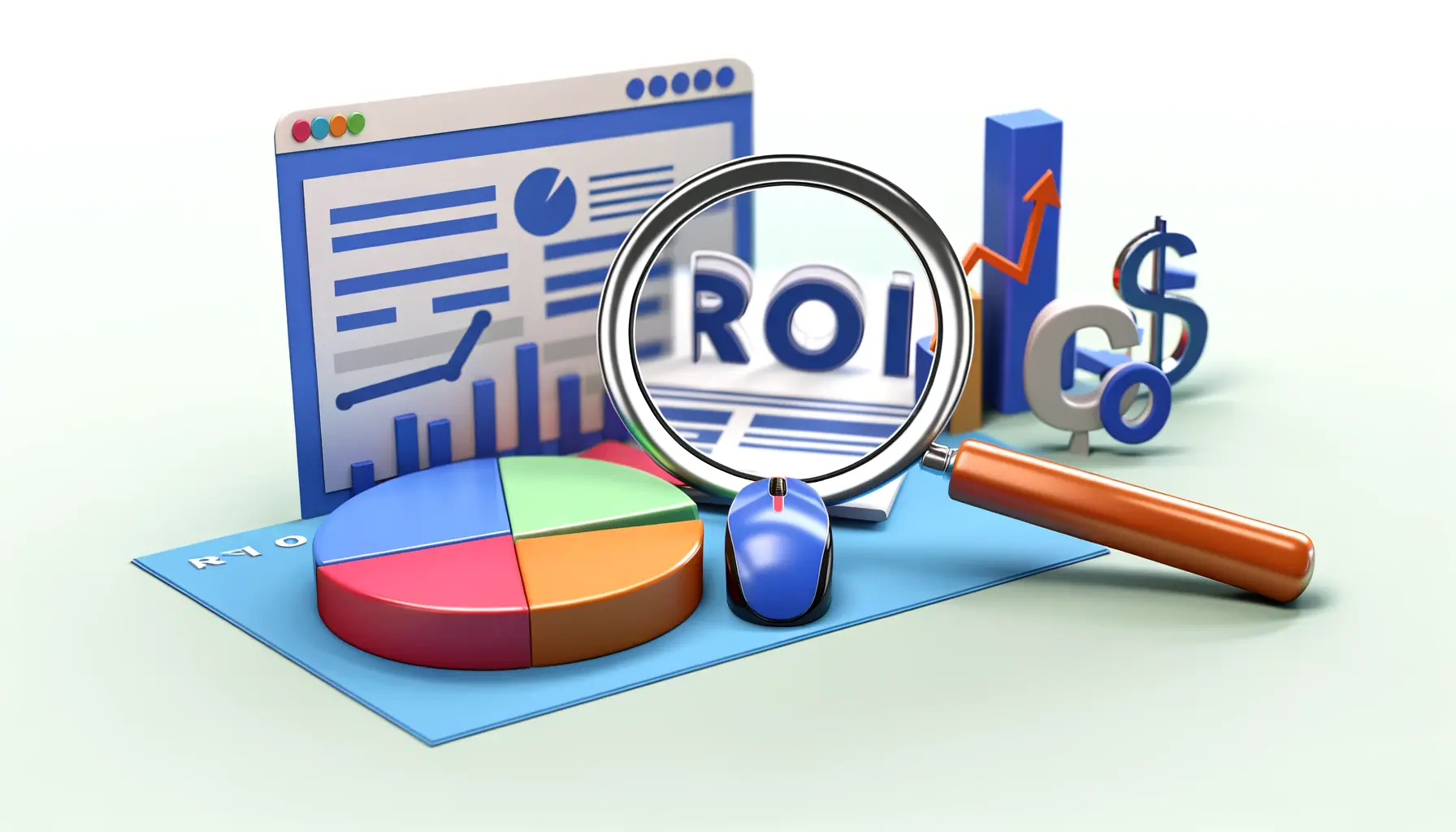Understanding the intricacies of Search Engine Optimization (SEO) can be a daunting task, especially when it comes to ensuring that your review site stands out in the crowded digital landscape.
At the heart of a successful SEO strategy lies the effective use of sitemaps and indexing, tools that are crucial for enhancing the visibility of any website.
Sitemaps, in particular, serve as a roadmap for search engines, guiding them through the content of your site and ensuring that every page is accounted for and easily accessible.
This foundational aspect of SEO is not just about creating a list of URLs; it’s about structuring your site in a way that is both user-friendly and search engine-friendly.
Indexing, on the other hand, is the process by which search engines organize information before a search to enable super-fast responses to queries.
When combined, sitemaps and indexing are powerful tools that can significantly speed up the review process of your site by search engines, thereby improving your site’s SEO performance.
This article delves into the importance of sitemaps and indexing for faster review site SEO, offering valuable insights and practical tips on how to leverage these tools for optimal website performance.
By understanding and implementing these strategies, you can ensure that your review site not only attracts but also retains a wider audience through improved search engine rankings.
- Understanding Sitemaps: The Blueprint of Your Site
- Optimizing Your Sitemap for SEO
- Indexing: Accelerating Content Visibility
- Technical SEO: Foundation for Sitemaps and Indexing
- Content Optimization: Beyond the Sitemap
- Link Building and Its Impact on SEO
- Measuring SEO Success: Analytics and Tools
- Maximizing Review Site SEO: A Strategic Blueprint
- Sitemaps and Indexing for Faster Review Site SEO: FAQs
Understanding Sitemaps: The Blueprint of Your Site
What is a Sitemap?
A sitemap is essentially the blueprint of your website.
It is an XML file that lists all the important pages of your site, making it easier for search engines to crawl and index your content.
Think of it as a directory that tells search engines about the structure of your site, which pages are most important, and how often they are updated.
This is crucial for review sites, where fresh content is frequently added, and pages are regularly updated with new reviews and comments.
Creating a comprehensive sitemap is the first step towards ensuring that your site is fully recognized and understood by search engines.
It not only aids in faster indexing but also helps in identifying any potential issues with your site’s structure that could hinder its performance in search results.
By meticulously listing all your pages, including those that might not be easily discoverable through links, a sitemap ensures that search engines can more efficiently discover and index your content.
Benefits of a Well-Structured Sitemap
The benefits of having a well-structured sitemap extend beyond mere indexing.
For review sites, in particular, a sitemap can significantly enhance the site’s visibility by ensuring that all reviews, regardless of their age or the number of internal links pointing to them, are found by search engines.
This is particularly important for SEO, as it ensures that valuable content does not remain hidden from potential readers.
Moreover, a sitemap allows site owners to specify the priority of pages, helping search engines understand which content is most important and should be indexed first.
Another key benefit is the improvement in crawl efficiency.
Search engines allocate a crawl budget for each site, which is the number of pages the search engine will crawl on your site within a certain timeframe.
A well-organized sitemap helps search engines use this budget more effectively, ensuring that the most important content is crawled and indexed promptly.
This is especially critical for review sites that are constantly updating with new content, as it ensures that the latest reviews are quickly accessible to users through search.
A sitemap is not just a technical necessity; it’s a strategic tool that can significantly impact your review site’s SEO performance by ensuring that all content is discoverable, prioritized, and efficiently crawled by search engines.
Optimizing Your Sitemap for SEO
Optimizing your sitemap for SEO is a critical step in ensuring that your review site is easily navigable not just by users, but also by search engines.
This optimization process involves several key strategies that can significantly enhance your site’s visibility and search engine ranking.
By focusing on the structure, content, and maintenance of your sitemap, you can create a powerful tool that communicates effectively with search engines and guides them through your site’s most important pages.
Here are some essential tips for optimizing your sitemap:
- Keep Your Sitemap Updated: Regularly update your sitemap to reflect new content additions, deletions, or changes. This ensures that search engines always have the latest version of your site structure, allowing them to index new reviews and pages more efficiently.
- Use a Logical Structure: Organize your sitemap in a logical and hierarchical manner. Group similar pages together and use a clear naming convention for your URLs. This helps search engines understand the relationship between different pages and the overall structure of your site.
- Include Only Important URLs: Your sitemap should only contain URLs that you want to be indexed by search engines. Exclude any duplicate pages, pages with thin content, or pages that are not relevant to your site’s purpose.
- Specify Page Priority: Use the
prioritytag to indicate the importance of each page on your site. While this tag does not directly influence rankings, it can help search engines understand which pages you deem most important for users. - Set Update Frequencies: The
changefreqtag allows you to specify how often each page is likely to change. This can help search engines decide how frequently to crawl different parts of your site.
Implementing Sitemap Best Practices
Implementing best practices for your sitemap not only aids in SEO but also enhances the user experience by ensuring that your content is systematically organized and easily accessible.
Here are some best practices to consider:
- Automate Sitemap Updates: Use tools or plugins that automatically update your sitemap whenever new content is added or existing content is modified. This reduces the manual effort required to keep your sitemap current.
- Submit Your Sitemap to Search Engines: Manually submit your updated sitemap to major search engines like Google and Bing through their respective webmaster tools. This can speed up the indexing process for new or updated pages.
- Monitor Sitemap Errors: Regularly check for any errors in your sitemap through Google Search Console. Addressing errors promptly can prevent indexing issues and ensure that your site remains fully crawlable.
A well-optimized sitemap is a cornerstone of effective SEO strategy for review sites. By adhering to these optimization tips and best practices, you can significantly improve your site’s search engine visibility and user navigation experience.
Indexing: Accelerating Content Visibility
Indexing is the process through which search engines organize information before a search to enable super-fast responses to queries.
For review sites, where content is continuously updated and new reviews are frequently added, efficient indexing is crucial for ensuring that content is quickly discoverable by users.
Accelerating content visibility through effective indexing strategies can significantly impact your site’s traffic and user engagement.
To enhance indexing and ensure your content is promptly visible on search engines, consider the following strategies:
- Content Quality: High-quality, unique content is more likely to be indexed quickly by search engines. Ensure that your reviews are detailed, informative, and offer value to your readers.
- Internal Linking: Use internal linking wisely to help search engines discover new content. Linking to new reviews from high-authority pages on your site can speed up the indexing process.
- Mobile Optimization: With mobile-first indexing, ensuring your site is optimized for mobile devices is crucial. A mobile-friendly site is more likely to be indexed and ranked favorably by search engines.
- Use of Social Media: Sharing your content on social media platforms can lead to faster indexing. When content is widely shared, it signals to search engines that the content is valuable and should be indexed promptly.
Monitoring Indexing Status
Monitoring the indexing status of your pages is essential for identifying potential issues that could affect your site’s visibility.
Tools like Google Search Console offer valuable insights into how your content is indexed and highlight any problems that need to be addressed.
Regularly checking your indexing status allows you to:
- Verify that new content is being indexed as expected.
- Identify pages that are not being indexed and investigate the reasons why.
- Monitor the overall health of your site’s indexing and make necessary adjustments to your SEO strategy.
By actively monitoring and optimizing for indexing, you can ensure that your review site remains competitive in search engine results pages (SERPs).
This not only improves your site’s visibility but also enhances the user experience by making it easier for users to find the content they are searching for.
Effective indexing is a dynamic process that requires ongoing attention and optimization. By implementing these strategies, you can accelerate content visibility and drive more organic traffic to your review site.
Technical SEO: Foundation for Sitemaps and Indexing
Technical SEO lays the groundwork for effective sitemaps and indexing, ensuring that search engines can crawl and index your review site without any obstacles.
It encompasses a range of practices designed to optimize the infrastructure of your site, making it more accessible and understandable to search engines.
For review sites, where content is frequently updated and user engagement is key, a solid technical SEO foundation is indispensable for achieving top search engine rankings.
Key components of technical SEO that impact sitemaps and indexing include:
- Site Speed: Fast-loading pages are crucial for both user experience and search engine rankings. Optimize images, leverage browser caching, and minimize server response time to improve site speed.
- Secure and Accessible Website: Using HTTPS ensures a secure connection, which is a ranking signal for Google. Additionally, your site should be easily accessible to search engines with a well-configured robots.txt file and no broken links.
- Mobile-Friendly Design: With the advent of mobile-first indexing, having a responsive design that adapts to various screen sizes is essential for being indexed and ranked by search engines.
- Structured Data Markup: Implementing schema markup helps search engines understand the content of your pages better, facilitating more effective indexing and enhancing the appearance of your site in SERPs.
Optimizing Site Architecture
Optimizing your site’s architecture is a critical aspect of technical SEO that directly influences sitemaps and indexing.
A well-structured site architecture not only helps search engines crawl your site more efficiently but also improves user navigation.
Consider the following strategies for optimizing your site’s architecture:
- Create a logical hierarchy of pages with clear categories and subcategories.
- Use breadcrumb navigation to help users understand their location within your site.
- Ensure that important content is no more than three clicks away from the homepage.
By focusing on these technical SEO elements, you can create a strong foundation that supports effective sitemaps and indexing.
This not only helps search engines understand and rank your content better but also provides a better experience for your users, encouraging them to engage more deeply with your review site.
Remember, technical SEO is an ongoing process that requires regular audits and updates to adapt to changing search engine algorithms and user expectations. Stay proactive in optimizing your site to maintain and improve your search engine visibility.
Content Optimization: Beyond the Sitemap
While sitemaps and technical SEO lay the groundwork for search engines to find and index your review site, content optimization ensures that your site’s content is attractive, both to search engines and your audience.
Content optimization involves refining the quality and structure of your content to improve visibility, engagement, and rankings.
For review sites, where content is the primary draw for visitors, optimizing your reviews and articles is crucial for SEO success.
Effective content optimization strategies include:
- Keyword Research: Identifying the right keywords and phrases that your target audience uses to search for reviews is the first step in content optimization. Incorporate these keywords naturally into your titles, headings, and throughout the body of your reviews.
- Quality Content: Ensure that your reviews are informative, well-written, and provide value to your readers. High-quality content is more likely to be shared, linked to, and ranked favorably by search engines.
- Use of Multimedia: Incorporating images, videos, and infographics can make your reviews more engaging and shareable. Optimizing these multimedia elements with descriptive filenames and alt text can also contribute to your site’s SEO.
- Internal Linking: Linking to other relevant reviews and pages within your site can help search engines discover and index more of your content while improving the user experience by providing additional reading options.
Enhancing User Engagement
Content optimization also plays a key role in enhancing user engagement on your review site.
Engaged users are more likely to spend more time on your site, share your content, and return in the future.
Strategies to enhance user engagement through content optimization include:
- Creating compelling and clickable titles that accurately reflect the content of your reviews.
- Using subheadings and bullet points to break up text and make your reviews easier to scan.
- Encouraging user interaction by asking questions, inviting comments, and responding to user feedback.
By focusing on content optimization, you can ensure that your review site not only ranks well in search engine results but also attracts and retains a dedicated audience.
Remember, content is king in the digital world, and optimizing your site’s content is key to standing out in the competitive landscape of review sites.
Content optimization is an ongoing process that requires constant attention and updates. Keep abreast of the latest SEO trends and user preferences to ensure that your content remains relevant and engaging.
Link Building and Its Impact on SEO
Link building is a crucial aspect of SEO that significantly impacts the visibility and ranking of your review site.
It involves acquiring hyperlinks from other websites to your own, which search engines use as signals to determine the quality and relevance of your site.
A robust link-building strategy can enhance your site’s authority, drive referral traffic, and improve your site’s position in search engine results pages (SERPs).
Effective link-building strategies for review sites include:
- Creating Shareable Content: High-quality, informative, and engaging reviews are more likely to be shared and linked to by other sites, bloggers, and on social media platforms.
- Guest Posting: Writing guest posts for reputable sites in your niche can help you gain backlinks and expose your review site to a broader audience.
- Building Relationships: Networking with other bloggers, site owners, and influencers in your niche can lead to natural link-building opportunities.
- Directory Submissions: Submitting your review site to relevant directories can help you gain backlinks, though it’s important to focus on directories that are reputable and relevant to your niche.
Monitoring and Analyzing Backlinks
Monitoring the backlinks to your review site is essential for understanding the effectiveness of your link-building efforts and identifying any potentially harmful links that could negatively impact your SEO.
Tools like Google Search Console, Ahrefs, and Moz offer features for tracking your site’s backlinks, analyzing the quality of those links, and identifying any issues that need to be addressed.
Analyzing your backlink profile can help you:
- Identify which of your reviews or content pieces are attracting the most links.
- Understand which external sites are linking to you and assess the quality of those sites.
- Detect any unnatural or spammy backlinks that could lead to penalties from search engines.
By actively building and monitoring your backlink profile, you can enhance your review site’s SEO, improve its visibility in search results, and attract more targeted traffic.
Remember, the goal of link building is not just to increase the number of links to your site, but to build a network of quality, relevant links that signal to search engines the authority and value of your content.
Link building is a long-term strategy that requires patience, persistence, and a focus on building relationships and creating valuable content. The rewards, however, in terms of SEO and site visibility, can be substantial.
Measuring SEO Success: Analytics and Tools
Understanding the impact of sitemaps, indexing, and overall SEO efforts on your review site’s performance is crucial for continuous improvement.
Measuring SEO success involves tracking a variety of metrics and using analytics tools to gather insights into how users interact with your site, how it ranks in search engine results, and where improvements can be made.
This data-driven approach allows you to refine your SEO strategies for better results over time.
Key metrics to track for SEO success include:
- Organic Traffic: The number of visitors coming to your site through search engine results. An increase in organic traffic indicates that your SEO efforts are paying off.
- Search Rankings: The position of your site’s pages in search engine results for specific keywords. Higher rankings can lead to more visibility and traffic.
- Bounce Rate: The percentage of visitors who leave your site after viewing only one page. A high bounce rate may indicate that your content is not meeting the expectations of your audience.
- Conversion Rate: The percentage of visitors who take a desired action on your site, such as subscribing to a newsletter or making a purchase. Improvements in conversion rate can indicate that your site is attracting more targeted traffic.
Utilizing SEO Analytics Tools
To effectively measure these metrics and gain insights into your SEO performance, utilizing analytics tools is essential.
Some of the most popular SEO analytics tools include:
- Google Analytics: Provides comprehensive data on website traffic, user behavior, and conversion metrics. It’s a must-have tool for understanding how users interact with your site.
- Google Search Console: Offers insights into your site’s visibility in Google search results, including information on indexing status, search rankings, and issues that may affect your site’s performance.
- Ahrefs: A comprehensive SEO tool that provides data on backlinks, keyword rankings, competitor analysis, and more. It’s particularly useful for tracking your link-building efforts.
- SEMrush: Offers a suite of tools for keyword research, site audits, competitor analysis, and tracking search rankings. It’s valuable for identifying opportunities to improve your SEO strategy.
By regularly monitoring these metrics and utilizing analytics tools, you can identify what’s working well and where there’s room for improvement in your SEO strategy.
This ongoing analysis is key to driving continuous growth in organic traffic and achieving long-term success for your review site.
SEO is not a set-it-and-forget-it endeavor. It requires constant monitoring, analysis, and adjustment to stay ahead of the competition and meet the evolving needs of your audience. Embrace a data-driven approach to SEO to maximize the performance of your review site.
Maximizing Review Site SEO: A Strategic Blueprint
In the dynamic world of digital marketing, optimizing your review site for search engines is not just about adhering to the basics of SEO.
It’s about crafting a comprehensive strategy that encompasses sitemaps, indexing, technical SEO, content optimization, link building, and the effective use of analytics tools.
This article has traversed the landscape of SEO for review sites, offering insights into each component’s role in enhancing your site’s visibility and performance.
Creating a Cohesive SEO Ecosystem
The journey begins with understanding the critical role of sitemaps and indexing in making your content accessible to search engines.
A well-structured sitemap acts as a guide, ensuring that search engines can easily discover and index all your valuable content.
However, the efficacy of sitemaps extends beyond their creation.
Regular updates and optimization are paramount to reflect your site’s evolving content landscape accurately.
Technical SEO forms the backbone of your site’s relationship with search engines.
A technically sound site that loads quickly, is secure, mobile-friendly, and has a logical site architecture sets the stage for successful indexing and user engagement.
It’s the foundation upon which the rest of your SEO efforts are built.
Yet, the heart of your review site’s SEO strategy lies in content optimization.
Engaging, high-quality content that resonates with your audience and incorporates strategic keyword usage can elevate your site’s authority and relevance.
Coupled with a robust link-building strategy, your site can achieve the kind of credibility and visibility that search engines reward.
Leveraging Analytics for Continuous Improvement
SEO is an ongoing process, and success in this arena comes from not just implementing strategies but also measuring their impact.
Analytics and SEO tools provide the insights needed to understand user behavior, site performance, and areas for improvement.
By keeping a pulse on these metrics, you can fine-tune your strategies, ensuring that your review site remains competitive and continues to grow its audience.
- Monitor organic traffic trends to gauge overall SEO performance.
- Analyze search rankings to understand your content’s visibility in SERPs.
- Review bounce rates and conversion rates to assess user engagement and content effectiveness.
- Utilize SEO analytics tools for comprehensive site audits and competitor analysis.
In conclusion, maximizing review site SEO requires a multifaceted approach that integrates technical optimization, content excellence, and strategic link building, all underpinned by data-driven insights.
By embracing this holistic strategy, you can enhance your site’s search engine rankings, attract a larger audience, and establish your review site as a trusted authority in your niche.
Remember, the path to SEO success is iterative, demanding continuous learning, adaptation, and optimization to stay ahead in the ever-evolving digital landscape.
Want your website to top Google search rankings? Leave the SEO to our professional agency!
Sitemaps and Indexing for Faster Review Site SEO: FAQs
Unraveling the complexities of sitemaps and indexing can significantly enhance your review site’s SEO performance. Here are some frequently asked questions that shed light on common queries related to this topic.
Yes, sitemaps play a crucial role in SEO by ensuring search engines can easily discover and index all pages on your site, leading to improved visibility and search rankings.
Your sitemap should be updated whenever new content is added, removed, or altered on your site to ensure search engines have the most current view of your site’s structure.
Even small review sites benefit from a sitemap, as it aids search engines in efficiently indexing your content, potentially boosting your site’s search engine rankings.
Absolutely. A well-structured sitemap can guide search engines more effectively through your site, improving the efficiency of the crawling process.
HTML sitemaps are designed for human visitors to help navigate your site, while XML sitemaps are structured for search engines to improve crawling and indexing.
No, only include pages that you want search engines to index. Exclude duplicate content, private pages, or those with no SEO value.
Submit your sitemap through webmaster tools like Google Search Console or Bing Webmaster Tools to ensure search engines are aware of your sitemap’s existence.
Yes, including mobile-specific pages in your sitemap can improve mobile SEO by ensuring search engines index and serve your mobile-friendly content appropriately.












